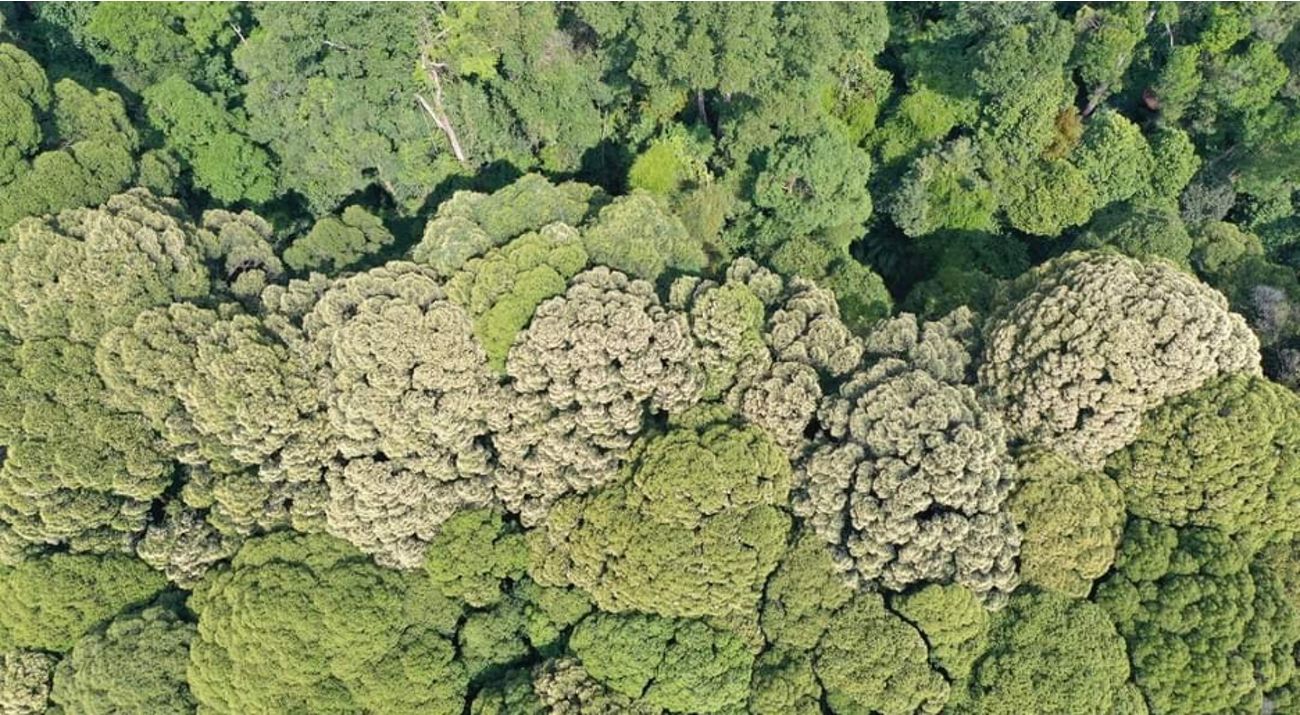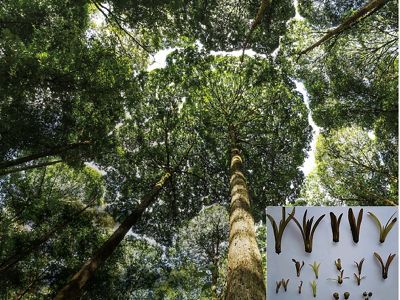The African tree family fueled the rise of Asian tropical rainforest

Many reading this article when you hear the word tropical rain forest, you may assume that it is a place where giant lush green trees dominate and large animals like tigers and elephants roam free. A few of you may have seen the rainforest when you visited Amazon, Borneo, trekked through the Western Ghats mountains in India, or had a holiday vacation in Andaman or the Nicobar Islands. But, for most tropical rainforest seems like a faraway remote place removed from everyday life. Nonetheless, our lives are intertwined with tropical forests, as archaeologist Patrick Roberts says in his book Jungle: How tropical forests shaped the world – and us “the history of tropical forests is human history too”. With the evolution of the first land plants and the origin of trees, tropical forest-affected dinosaurs influenced the evolution of early mammals, the first primates, and modern humans. Despite rainforests being the powerhouse for the evolution of plants and animals including humans, we know little about how rainforests initially developed on planet earth and spread across the continents.
A new collaborative study published in the prestigious journal Science, explores the origin of the modern-day tropical rainforests of Asia using dipterocarp tree evolution as a model. Dipterocarps are giant, often emergent trees frequently exceeding 45 meters in height and these dominate the canopy of tropical rainforests in Southeast Asia. They also hold the record of being some of the world’s tallest tree species reaching heights of over 100 meters. They belong to the plant family called Dipterocarpaceae and produce winged fruits which are dispersed by wind. Dipterocarps are best known for their commercial timber and mass flowering and fruiting which traditionally occur on a roughly 4 or 5year basis coinciding with dry weather conditions linked with the ocean-atmosphere phenomenon called the El Niño-Southern Oscillation (also known as ENSO or "El Niño"). In Bornean rainforests nearly 200 species of Dipterocarpaceae flower and fruit synchronously over an area of 150 million hectares producing colorful and breathtaking views of tropical rainforest. This is a boon for seed predating animals, especially wild boars. The local people call this mass fruiting year a time of plenty as they get to export dipterocarp fruits, and harvest plenty of pork for consumption. The tropical rainforest dominated by dipterocarps are rich in biodiversity, providing the habitat for many critically endangered animal species including orangutans, rhinoceros, and elephant, and mitigating greenhouse gas emissions by sequestering twice the CO2 from the atmosphere compared to any trees in Amazonian Forest. Thus, their conservation is of paramount importance and urgency.
Since the Asian tropical forests are mostly dominated by dipterocarp trees, it is believed that dipterocarp’s origin and diversification also fueled the rise of highly biodiverse tropical rainforests,s especially in the Southeast Asian region. In this collaborative study recently published in Science, researchers from The Nature Conservancy-India, Birbal Sahni Institute of Palaeosciences-India, Institut Français de Pondichéry-India, Palynova-UK, Indian Institute of Technology Bombay-India, Petroleum Laboratories, Research & Studies (PLRS)-Sudan, Concordia University-Canada, and Harvard University-USA analyzed the fossil pollen and amber of Dipterocarpaceae collected from western India and Sudan and conducted molecular dating analysis based on DNA sequence of half of the known species within the plant family and evaluated morphological characters of fossil and living pollen of species to determine where dipterocarps first originated, how they traveled to other continents, whether past climate change and geological events shaped their evolution, and when dipterocarps started to proliferate in Southeast Asia and fuel the rise of their tropical rainforests.

The study suggests that the dipterocarp tree family evolved in Africa around 102 million years ago (Ma) in a seasonal tropical climate and reached India around ~70 million years ago via an ancient island arc alignment that connected Africa and India known as the Kohistan Ladakh Island Arc, which was subsequently destroyed by obduction and is now incorporated within the Himalaya as a result of the India-Asia collision. The presence of dipterocarp fossils in India around 66 million years ago suggests surprisingly that most of the dipterocarp genera managed to survive Deccan volcanic eruptions and KT mass extinction event that killed 75 percent of life on Earth including dinosaurs.
With the aftermath of Deccan volcanic eruptions and KT mass extinction, dipterocarps subsequently diversified on the Indian Plate that also included today’s Sri Lanka. The initial diversification of dipterocarps on the Indian plate was possibly influenced by the development of rich soils resulting from the massive volcanic eruptions 66 million years ago. The fertilized soil and favorable wet per humid climate as India lay in an equatorial position provided favorable conditions for dipterocarps to diversify on the Indian Plate before they dispersed to southeast Asia wrote the researchers.
The Indian Plate took a further northward journey and collided with Asian landmass around 50 million years ago. In the wake of the continental clash, tall dipterocarp trees spread from the Indian Plate and began to diversify in the Asian tropical rainforest. The geological event of the India-Asia collision eventually gave birth to Himalayan mountains, which as they grew drastically changed the Indian monsoon pattern. As a result, many members of the Dipterocarpaceae went extinct in India, and only a few species survived in the Western Ghats and Assam. In Africa, the family is represented by the genus Montes which is savanna and dry forest tree, which also went extinct in India, but they were present there about 55 million years ago.
These magnificent tall trees that dispersed thousands of miles all the way from Africa and fueled the rise and spread of lush green rainforest in Southeast Asia, today are on the verge of extinction. Dipterocarps have been the major source of timber extraction across southeast Asia over the last 50 years leading to its overexploitation and leaving many formerly superabundant species critically endangered. It is estimated that over 50% of tree species in the Dipterocarpaceae family are listed under the ‘threatened’ category according to the IUCN. The extinction of dipterocarps across southeast Asia can threaten the survival of the rainforest which is home to unique and rich biodiversity.
Quote: Shivaprakash K. Nagaraju
Now it is our responsibility to safeguard the survival of magnificent tall dipterocarp tree species to save the millions of lives in the Asian rainforest.
Finally, in addition to unraveling the mystery of dipterocarp origin, the present study findings also highlight the unique biogeographic significance of the Indian subcontinent, mainly the role of India as an ancient biotic corridor for the migration of plants and animals all the way from Africa to Asia and fueling the evolution of rich biodiversity in Asian tropical rainforests.
Interested to read the entire study? Click here.
